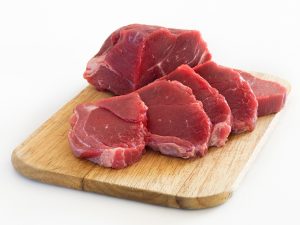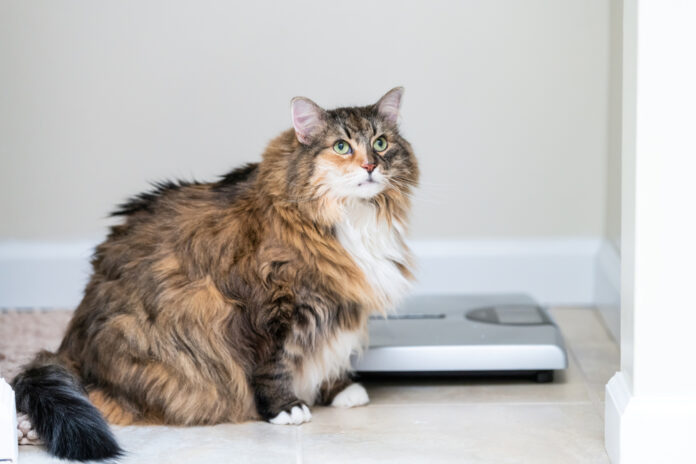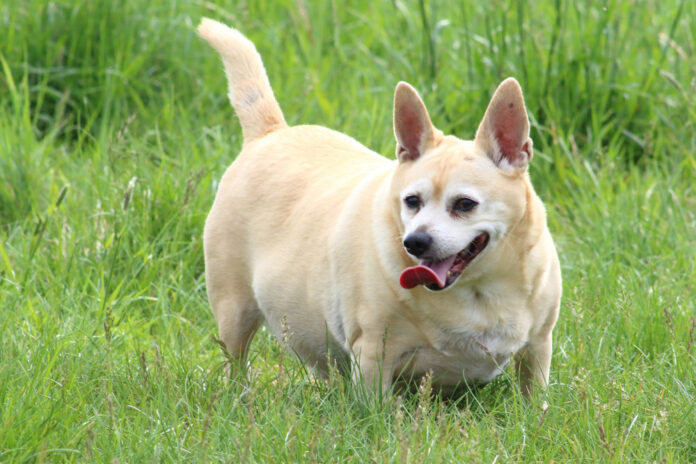A nutritional approach to your pet’s skin problems

Following these 7 nutritional guidelines can significantly reduce your dog or cat’s skin problems.
Switching a dog or cat with skin problems to a fresh food diet often brings about an improvement in itchiness. We have seen some skin cases clear up completely thanks to dietary changes. This article will give you some nutritional guidelines that will not only reduce dermatological problems in your pet, but also improve his general health. Keep in mind that each dog and cat is unique, and may require additional supplementation, but the basic food changes covered here can be a good start. As always, work with a holistic or integrative veterinarian so you can properly address your pet’s individual needs, especially if he has other health problems.
1. Feed him a high quality diet
When it comes to skin problems, the first step is to give your dog or cat the best quality food you can afford. It should be:
Fresh: As most of us already know, diets made from fresh food ingredients provide vastly superior nutrition over processed commercial foods.
Clean: Many chemicals are used in animal and plant farming. Look for meats that contain no antibiotics or hormones.
The Weston A Price Foundation produces a compact paperback Shopping Guide, updated each year, that lists reliable meat sources around the country. You may also know of local community-supported farms with organic or minimally chemically-treated meat and produce. There may even be local pet food co-ops you can join to purchase meats less expensively.
2. Give him the right proportions of meat and veggies
The basic diet for dogs consists of 50% to 75% meat and 25% to 50% high calorie cooked vegetables.
- This makes the diet about 17% to 25% animal protein, a minimal amount and also suitable if the pet has renal disease. You can increase the percentage of meat for growing, athletic or cachectic animals.
- Fresh food contains approximately 75% water, whereas commercial dry foods are without moisture. So we need high calorie vegetables along with the meat. The harder the vegetable, the more calories it contains. Examples are potatoes, sweet potatoes, cauliflower, beets, winter squash, turnips and parsnips. If your dog has arthritis, stay away from nightshade vegetables in case he has a sensitivity to glycoalkaloids or steroid alkaloids. Nightshade vegetables include white potatoes, all types of tomatoes and peppers, and eggplants.
The basic diet for cats is 100% meat. You can add some well-cooked vegetables for variety if the cat likes them. Some cats are so conditioned to the taste, texture and smell of commercial dry foods that it can take time – sometimes months – to change their diet. If a cat will not eat any type of fresh meat at all, ever so gradually add water to the dry food. Once the dry food is soft enough, start adding minute amounts of cooked minced meat, gradually increasing the amount of meat and decreasing the dry food. Then over time, you can cook the meat less and less. Some cats will eat canned or cooked minced food when the dry food is powdered and “salted” over the top.
 3. Start with cooked meat, then transition to raw
3. Start with cooked meat, then transition to raw
We usually start with cooked meat since the pet’s intestinal microflora have been conditioned to processed foods and might not easily digest raw meat at first. This can result in loose and frequent stools. Gradually cook the meat less and less until it’s being served raw. Not every pet can eat every kind of meat protein. If any observable problems occur after your dog or cat eats a particular type of meat, don’t give him any more.
4. Provide basic supplements
Consult a holistic or integrative veterinarian before giving your dog or cat a new supplement, so that you get the right product and dosage.
a) Calcium is needed to balance the high phosphorus content of meat. Processed bone meal and other calcium carbonate products may be indigestible for some animals and the manufacturer should ensure the bone meal is clear of heavy metals. I have seen two dogs that were fed meat with bone diets whose incisors looked like glass, with a line of pink pulp clearly visible inside. The teeth became white again after some months of providing the dogs with a more bioavailable calcium supplement.
b) Vitamins and minerals should be whole food products whose ingredient lists include only food names – not chemical names for vitamin fractions. Most commercial diets have artificial fractions of vitamins and non-chelated minerals added after cooking. These are not usable by the body without the addition of missing phytonutrients to create the complete biologically-active vitamins we get in fresh foods. In some cases, artificial fractions can be toxic to the body.
c) Omega 3 fatty acids are very important for pets with skin problems as they are needed to modulate inflammatory conditions. If you can afford to feed pasture-raised animal products, there may be sufficient Omega 3 in your dog or cat’s food and additional supplementation won’t be needed.
5. Give him clean water
The water you give your pet should be filtered through activated charcoal, at the very least. Pitcher-type filters can be found in many department stores. Tap water contains many chemicals, metals and unhealthy organic compounds. Helpful information about different water filtration systems can be found at idealearthwater.com.
6. Keep a log
Keep a log of weekly body weights and call your vet if there is any weight loss. It is also a great idea to keep a record of your pet’s clinical signs. For example, you can rate his skin problems on a scale of 0-10 (none to horrible) on a weekly or bi-weekly basis. This is very useful for helping you and your vet decide when to add alternative therapies, and for tracking progress.
7. Don’t overload his system
One more very important point. The doses of products chosen for basic support or for specific medical conditions may need to be reduced over time. Once the pet’s body is in a healthier condition and builds up reserves, the concentrated nutrient product seems to overstimulate the system, so a dose reduction may be required. Another reason why it’s important to work with your vet.
Consuming adequate protein and healthy fats with a variety of fruits and vegetables, while staying away from processed foods and refined sugar, is the healthiest way for both animals and people to eat. Fresh diets help maintain great health. They can also heal skin conditions on their own, or become a key part of an integrative approach that includes additional therapies.
Case reports
Duke
Duke, a neutered male boxer, came to us at six years of age with chronic diarrhea and constant scratching of the ears, neck and chest. Two weeks into the diet transition, his diarrhea resolved and the itchiness reduced to the point where he could sleep through the night. The client saw this as a 50% decrease in itchiness.
However, Duke was still so itchy during the day that his owner wished to hurry up the process. So we gave him Nutrition Response Testing and found he had mercury poisoning. Mercury, arsenic and aluminum toxicity commonly underlie skin conditions in Massachusetts, where Duke lives. We gave him concentrated cilantro, and the mercury in Duke’s body’s gradually reduced over the next six weeks; as well, his itchiness gradually subsided and has not returned over the past three months.
Oliver
Oliver, a male neutered seven-year-old Bichon/Shihtzu cross, presented with a diagnosis of atopy and recurrent ear inflammations that started when he was 1½ years old. Spring and fall brought on more itchiness.
By the third week of diet transition, Oliver no longer needed Benadryl, and the client reported an itchiness rating of 2/10 to 3/10 compared to the initial 10/10. Two weeks later, the itchiness increased to 6/10 and Nutrition Response Testing showed his medications to be a problem. Solidago was used to start the detoxification process. Six weeks later, Oliver’s itchiness had reduced to 2/10 to 3/10 again. A few weeks later, the itchiness increased so the Solidago was discontinued and the itchiness subsided over the next two days.




